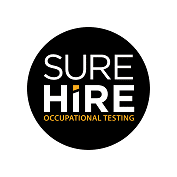At SureHire, our experts are frequently asked when employers should test their employees. Of course, keeping employees and the public safe are the main reasons to test, but there are many scenarios that might prompt an employer to complete occupational testing. Here are 6 of the most common reasons for initiating occupational health testing.
Jump Ahead
1. WHEN HIRING A NEW EMPLOYEE
Pre-employment drug and alcohol testing, like all drug and alcohol testing, is about controlling risk. But employers are responsible for providing a safe workplace by hiring the right people to reduce risk and costs and keep employees and the public safe. Conducted following a job offer and prior to the first day of work. Employers should ensure pre-employment tests are equitable. That means requiring them of all job applicants and not just specific individuals. They should also ensure a potential new hire is aware of the testing requirement and signs off on it.
Pre-employment testing is commonly used in the U.S., although it is less prevalent in Canada.
Tips for successful pre-employment testing:
- Be aware of human rights or disability legislation that could be triggered
- Require testing of all job applicants to avoid the perception of bias
- Ensure all potential new hires are made aware of the testing requirement
- Ensure potential new hires sign off and provide written consent to test

SureHire also provides consultation services on pre-employment background checks to ensure you have the safest workforce.
2. TO GAIN SITE ACCESS
Pre-access drug and alcohol testing may be required when a work site is safety-sensitive or for other safety-related or security-related reasons. Site owners often require this testing before providing site access to subcontractors and their employees. Site owners will set the testing requirements, and employers must know and adhere to these procedures as they may vary from site to site.
Tips for successful pre-employment testing:
- Know the specific testing requirements for each site owner, including the expected timeline for testing
- Understand that if an employee fails or refuses pre-access drug or alcohol testing, the sub-contractor may have to pay severance or provide a reasonable notice
- Include pre-site access testing rules in your drug and alcohol testing and ensure all employees know the procedures.

As leaders in occupational testing, SureHire provides pre-access testing with convenient booking and reliable results.
3. IF THERE IS AN ON-SITE INCIDENT OR NEAR MISS
If an incident happens on your job site and you suspect drugs or alcohol are a factor, you’ll want to act quickly to confirm. This is known as post-incident testing and will help determine if drugs or alcohol were a contributing factor. They should only occur when an employer or supervisor reasonably suspects drug or alcohol-induced impairment at the time of the accident.
The guidelines for post-incident testing should be clearly described in the company’s drug and alcohol policy. As an employer, you have only 8 hours for suspected alcohol intoxication and 32 hours for alleged drug use from the time of the incident to test your employee. You must document why the test is not administered within these timeframes.
Tips for successful post-incident testing:
- Carry out post-incident drug or alcohol testing as soon as possible if it is determined to be appropriate.
- Include guidelines for post-incident drug testing in the company’s workplace drug and alcohol policy and criteria determining whether testing should occur.
- Ensure post-incident drug testing occurs only when there is reasonable suspicion that an employee was under the influence of drugs or alcohol at the time of the incident and the employee’s acts or omissions may have been a contributing factor in the incident.

SureHire offers a full slate of post-incident testing options available on-site for or off.
4. IF YOU HAVE REASONABLE CAUSE
If your employee is visibly intoxicated and acting erratically, you have reasonable cause to test them. Being proactive can ensure you are stopping risky behaviour before an accident happens. This kind of testing is an effective deterrent, but We offer 24/7 emergency testing for clients and on-site testing to accommodate these timely tests. SureHire also offers Reasonable Suspicion Training to help employers recognize the signs and symptoms of workplace impairment.
Tips for successful reasonable cause/ reasonable suspicion testing:
- Include guidelines for reasonable cause testing in your workplace drug and alcohol testing policy
- Carefully document every reasonable suspicion incident, including actions taken by the employer.
- Ensure reasonable testing is consistently applied to all employees as outlined in the policy
- Maintain strict confidentiality during the entire reasonable testing process
- Train supervisors in detecting impairment and in dealing with post-incident responses

SureHire offers reasonable suspicion training and both mobile and laboratory options for drug and alcohol testing designed to be ready to deliver reasonable cause testing when and where you need it.
5. IF YOU HAVE AN EMPLOYEE RETURNING TO WORK
If you have a previous employee returning to work, you may require a return-to-work drug or alcohol test. Past employees may be returning from a leave of absence, medical or another type of leave. Substance Abuse Professionals also sometimes require these tests as part of a return-to-work program for employees who have failed a previous drug test. Return-to-work testing ensures a safe workplace for your employees and your company. You’ll also be sure your employee is safe and ready to return to work.
Tips for successful return-to-work testing:
- Ensure testing is tailored to the person’s circumstances or is a specific response to the requirements of a substance abuse professional.
- Meet any duty to accommodate that may be triggered due to the reasons for the return-to-duty testing.

SureHire offers an extensive suite of testing options, including 5, 8, and 13-panel drug tests; express and lab-based tests; and oral fluid, urinalysis, and hair follicle testing.
6. IF YOU ARE A DOT-REGULATED EMPLOYER
Department of Transportation (DOT) Regulations regarding drug and alcohol testing are a requirement for anyone working in a safety-sensitive transportation position. This includes workers from the Federal Motor Carrier Safety Administration (FMCSA), Federal Aviation Administration (FAA), Federal Railroad Administration (FRA), Federal Transit Administration (FTA), Pipeline and Hazardous Materials Safety Administration (PHMSA), and U.S. Coast Guard (Department of Homeland Security) (USCG). The DOT takes jurisdiction over the interstate trucking industry when vehicles transporting hazardous materials travel on public roads, whether interstate or intrastate.
If there is any doubt concerning compliance, an employer or employee can take a quick test online offered by the U.S. Department of Transportation to see if they are covered under the DOT Drug and Alcohol program at “Am I Covered.” If you are a Canadian company, DOT regulations only apply if you have employees crossing the Canada/U.S. border or have U.S.-based divisions that meet the criteria.
DOT testing requirements include a variety of pre-employment and regular random testing.

SureHire is an experienced provider of DOT-regulated drug and alcohol testing, including DOT random tests.
You May Also Be Interested In…
- Do You Have Reasonable Suspicion?
 Employers cannot initiate reasonable suspicion testing without first going through the 5-step process. Reasonable suspicion training provides critical information about how to initiate reasonable suspicion testing, including the 5-step process and other tools that employers can use to help manage the misuse of alcohol and drugs in the workplace.
Employers cannot initiate reasonable suspicion testing without first going through the 5-step process. Reasonable suspicion training provides critical information about how to initiate reasonable suspicion testing, including the 5-step process and other tools that employers can use to help manage the misuse of alcohol and drugs in the workplace. - An Employer’s Guide: What You and Your Employees Need to Know About DOT Drug & Alcohol Testing
 When implementing or maintaining DOT Drug & Alcohol testing, there are key areas that employers should consider.
When implementing or maintaining DOT Drug & Alcohol testing, there are key areas that employers should consider. - SureHire Occupational Testing Acquires COHR Health: A Positive Step Towards Safe, Healthy, Productive Workforces and Communities
 We are thrilled to announce that today, May 6, 2024, SureHire Occupational Testing has officially acquired COHR Health, a well-known leader in occupational health services. Read on…
We are thrilled to announce that today, May 6, 2024, SureHire Occupational Testing has officially acquired COHR Health, a well-known leader in occupational health services. Read on… - Occupational Testing Use Case – Mining
 In this case study, we will explore how mining companies can use various types of occupational tests to reduce Total Recordable Incident Rates (TRIR) long term.
In this case study, we will explore how mining companies can use various types of occupational tests to reduce Total Recordable Incident Rates (TRIR) long term. - 9 Strategies to Keep Workers Cool on Drilling Sites During Hot Summer Months
 This article delves into strategies to keep workers cool and safe on drilling sites during the hot summer months.
This article delves into strategies to keep workers cool and safe on drilling sites during the hot summer months. - Hearing Conservation Basics: How to Manage Occupational Noise
 Learn how to proactively mitigate occupational noise risks and help prevent NIHL among workers.
Learn how to proactively mitigate occupational noise risks and help prevent NIHL among workers.

